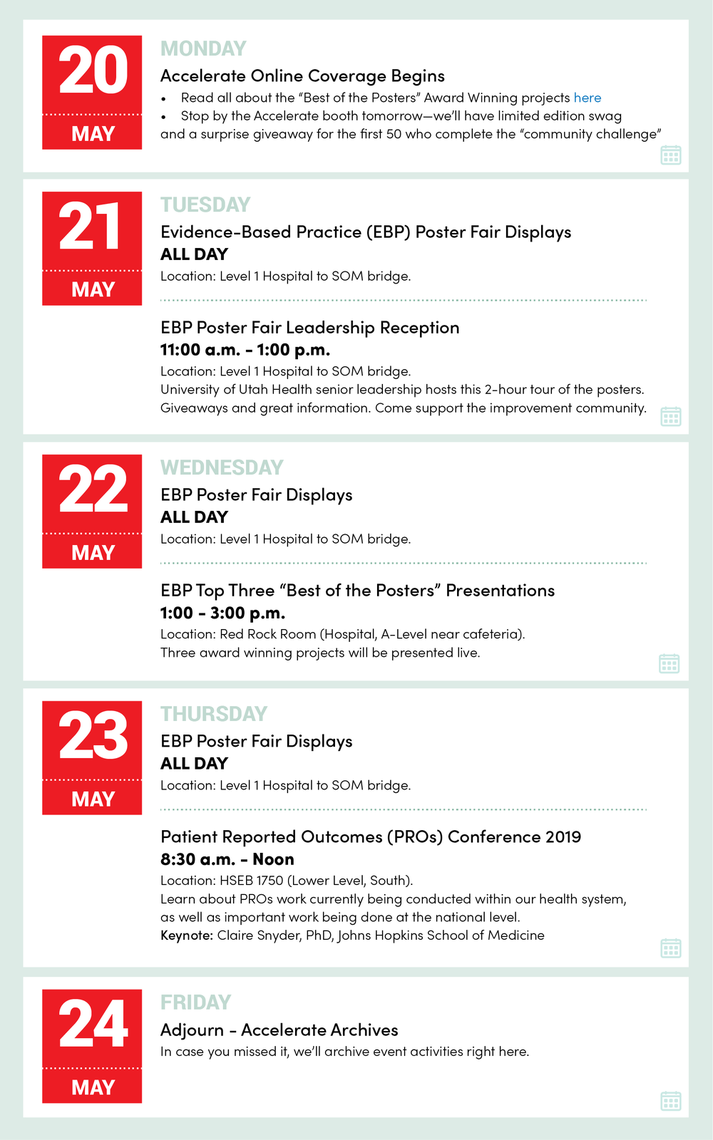For those who could not attend in person, we provided daily photos, videos and highlights from event proceedings.
DAY 5: Friday, May 24 | A Message from Dr. Good
The following is an excerpt from Dr. Good's remarks on Wednesday, May 22.
hank you to all of the improvers who participated in Value Week. You are one of the reasons I came to Utah.
From that peninsula way down on the other side of the country, one of the things that drew me—and really draws national attention to the University of Utah—is the work in quality and safety, patient care and process improvement.
We have an amazing culture that gets up every day, and says, “we can find a better way to do this.” Whether it’s a better patient outcome or a smoother process, our culture enables this great work. It is this sense of community focused on improvement that creates an energy that I believe is second to none. I’m very proud of the work done here at University of Utah Health.
Michael Good, MD—Senior Vice President, University of Utah Health
DAY 4: Thursday, May 23 | Patient Reported Outcomes (PROs) Conference
Thank you to everyone who attended the PROs conference.
Video of this conference is available to University of Utah employees only.
Please click here to access them on Pulse.
DAY 3: Wednesday, May 22 | EBP "Best of the Posters" Presentations
Protecting Perineal Skin Integrity of Critically Ill Neonates
PRESENTER: SUE ROGERS, RN | TEAM: ROGERS, S., CHAN, B., HINKLEY, S., HENDERSON, C., GARDNER, MD., STREVAY, D., BASERGA, M., JONES, C., YODER, S., PRATT, C., SHAFTER, K., WARNER, V., TIBBETS, V.
Description: Diaper dermatitis is a serious and common issue in the NBICU. The premature infant has increased caloric needs and therefore requires feedings that consist of high-density ingredients. Premature infants also have an underdeveloped stratum corneum (outer layer of skin). Loose stools coupled with the underdeveloped stratum corneum greatly increases the infant's risk of developing diaper dermatitis. The NBICU addressed this problem by creating a standardized protocol for diaper area skin care.
Emergency Department Cardiac Arrest and the Nurse Led Code
PRESENTER: NATHAN ROLL, NRP | TEAM: JOHNSON, E., SANFORD, M., YOUNGQUIST, S., ROLL, N., WOODRUFF, W., BAILEY, M., TROYER, J., ELIASON, J., GAUCI, EMMA.
Description: We created a cardiac arrest committee to help improve performance and outcomes with patients in cardiac arrest in the emergency department. Our goals were to improve team dynamics, performance and compression fraction. We organized roles in our meetings, and are teaching this plan and are measuring outcomes.
Early Sepsis Intervention and Education with EMS Teams
PRESENTER: WHITNEY WOODRUFF, DNP-FNP, BSN, RN | TEAM: WOODRUFF, WS., JOHNSON, E., ROLL, N., BAILEY, M., SANFORD, S., YOUNGQUIST, S.
Description: Early sepsis identification and treatment is important in the patient's outcome. EMS teams were questioned regarding knowledge of sepsis identification and early treatment. Pre-education and post-education surveys were taken. EMS crews stated they had an improved knowledge of sepsis identification and treatment and were also able to provide early treatment of sepsis patients.
DAY 2: Tuesday, May 21 | Evidence Based Practice Poster Fair Reception
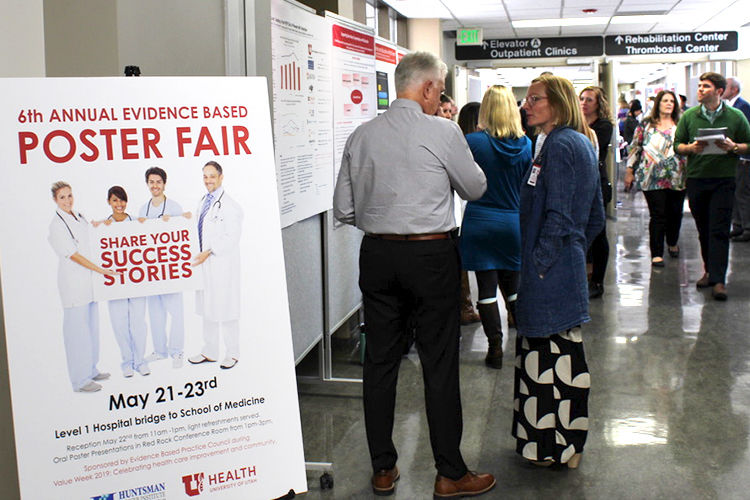
Infectious diseases physician Emily Spivak learns about Clinic 1A infectious diseases nurse manager Bruce Garrett’s improvement work.
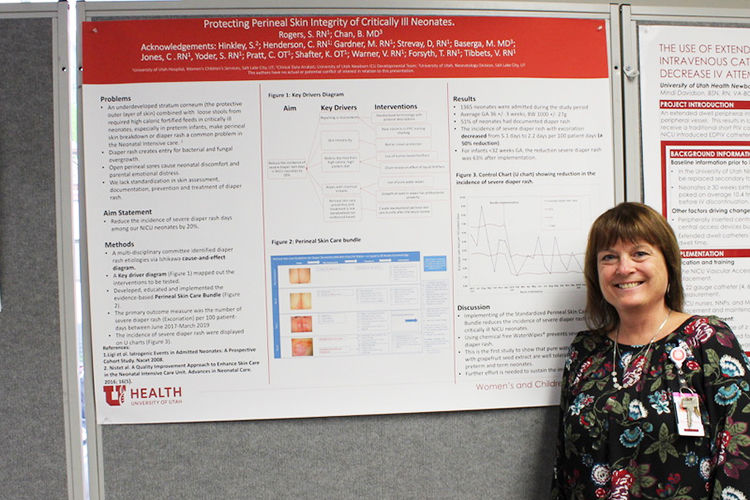
Nurse Sue Rogers shares her award-winning work to reduce diaper dermatitis on the newborn intensive care unit. The "Best of the Posters" Presentations were held Wednesday, May 22, from 1:00 - 3:00 p.m. in the Red Rock Room.
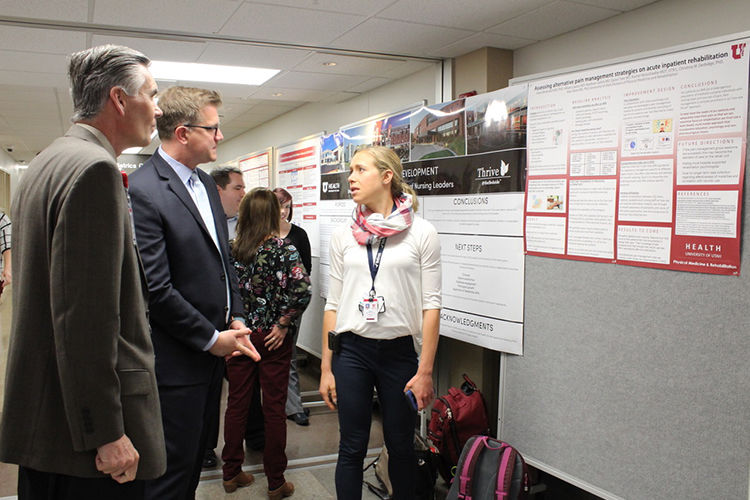
SVP Michael Good and CMQO Bob Pendleton learn about improving pain management strategies on the inpatient rehab unit.
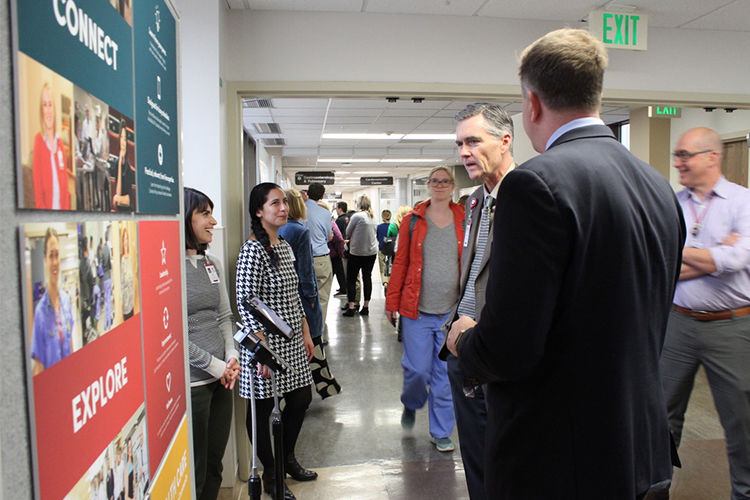
Visiting the Accelerate team.
We asked attendees: "What do you want to learn about?"
Nearly 50 individuals stopped by Accelerate to weigh-in:
- How to improve access to care for my patients
- How to get sponsorship for my work
- How to find resources to support my work
- Problem solving
- Health care trends
What do you think? Take the survey now.
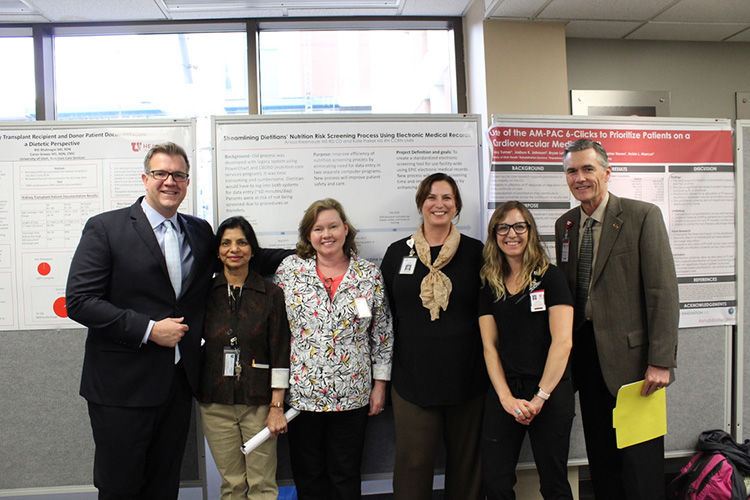
Drs. Pendleton and Good with the team who streamlined dietitians’ nutrition risk screening.

Quality improvement coordinator Sijana Omerovic and manager Hillery Byrd describe their work to improve transplant to value engineer Mitch Cannon.
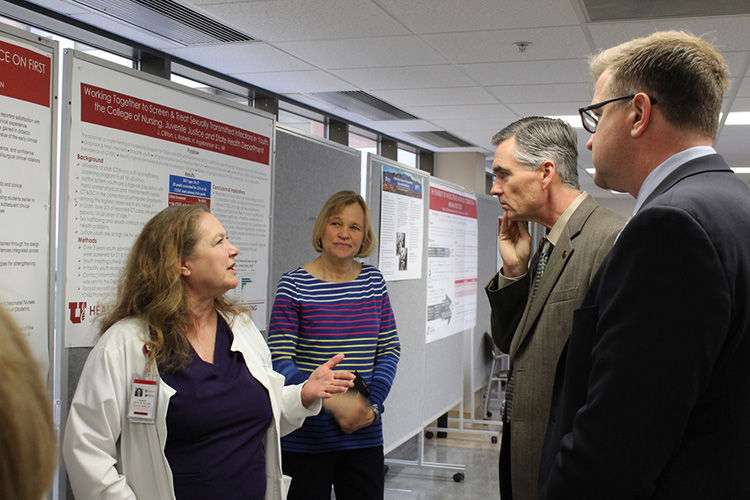
Leadership learning about the College of Nursing, Juvenile Justice, and State Health Department collaboration to treat sexually transmitted infections.

A crowd gathers to learn about "Brain Attack" response at the VAMC.
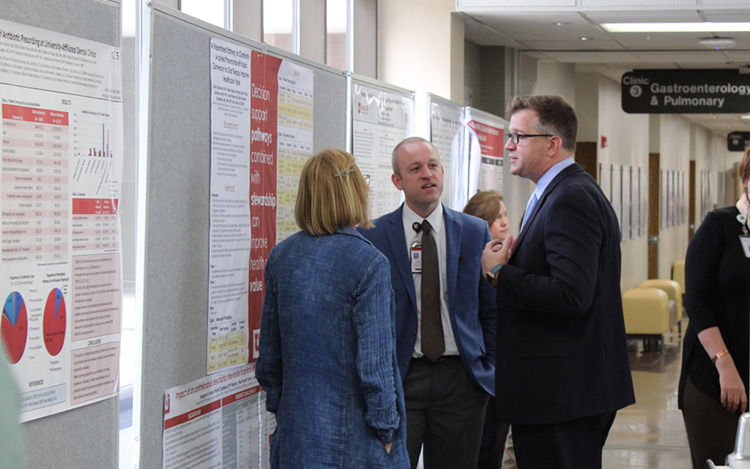
DAY 1: Monday, May 20 | Value Week Begins
Team, Process, Purpose: "Best of the Posters" Winners Announced

Bob Pendleton announced the winners of this year’s Evidence-Based Practice “Best of the Posters” competition. Of the over 60 projects submitted for this event, these three improvement projects exhibited exceptional strength of team, process, and purpose. Read all about it here.
Calendar of Events
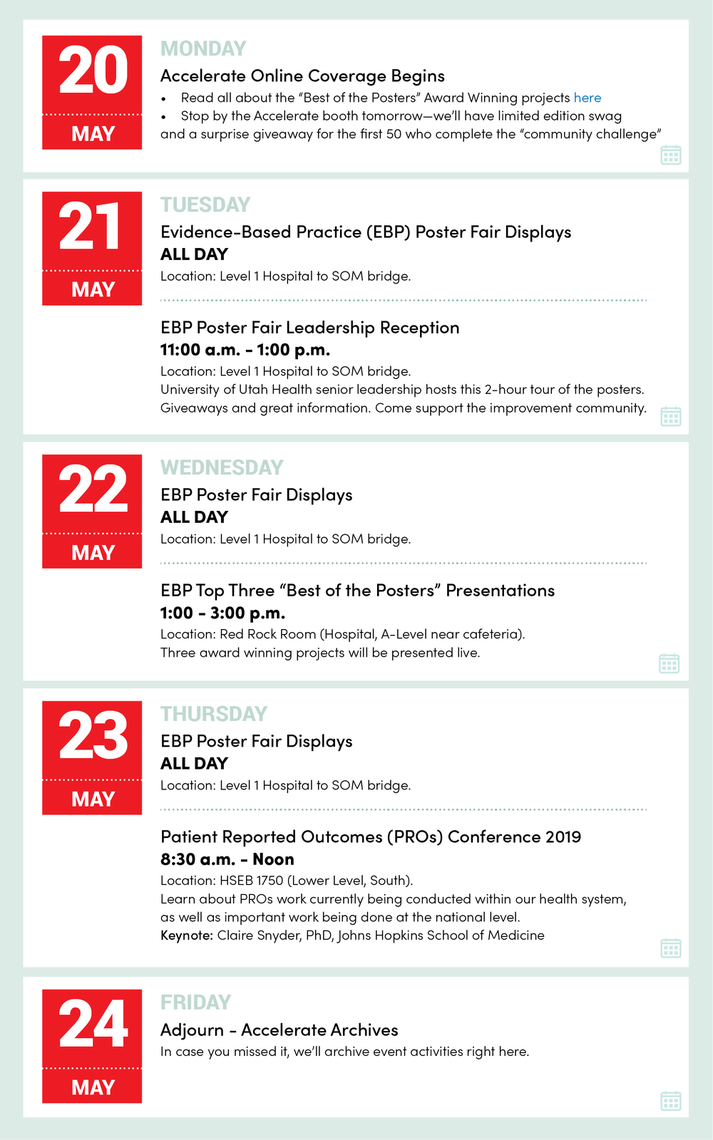
Accelerate Editorial Team
Including patients in treatment planning improves their experience, and patient reported outcomes (PROs) offer new ways to do just that — talking with patients about how treatment impacts their daily life. Clinical Nurse Coordinator Lisa McMurtrey shares the Burn Clinic team’s award-winning work implementing PROs during patient visits without disrupting flow.
Finding evidence to change the status quo isn’t easy; thinking about evidence in terms of how it persuades—whether subjective or objective—can make it easier. Plastic surgery resident Dino Maglić and his colleagues followed their guts and saved money by improving the laceration trays used to treat patients in the emergency department.
mEVAL is the system U of U Health uses to collect patient-reported outcomes (PROs). Of course, it’s what we do with the data that matters. mEVAL analytics team lead Josh Biber and cardiologist Josef Stehlik share how measuring PROs in the Cardiovascular Center is changing the ways clinicians treat and care for patients.

